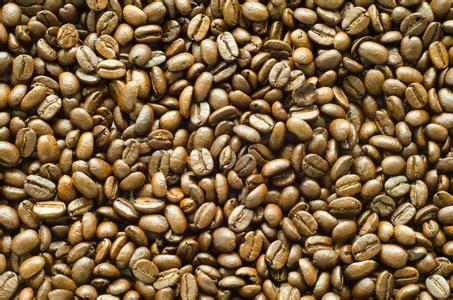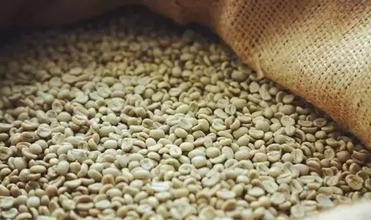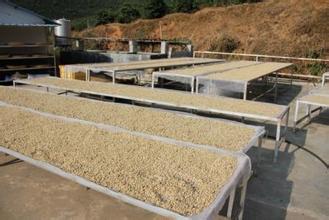Taste characteristics of Yunnan Katim Coffee beans A brief introduction to the story of Yunnan Coffee producing area
Flavor description of Katim Coffee beans in Yunnan Province
Typica: the oldest native variety in Ethiopia and southeastern Sudan. All Arabikas are derived from Tibika. The flavor is elegant, but the physique is weak, the disease resistance is poor, the fruit yield is less. Excellent manor beans such as the Blue Mountains of Jamaica, Manning of Sumatra and Kona of Hawaii all belong to Tibika. The top leaf of Tibika is red and bronze, which is called red top coffee. Tibika belongs to Arabica.
Typica: the oldest native variety in Ethiopia and southeastern Sudan. All Arabikas are derived from Tibika. The flavor is elegant, but the physique is weak, the disease resistance is poor, the fruit yield is less. Excellent manor beans such as the Blue Mountains of Jamaica, Manning of Sumatra and Kona of Hawaii all belong to Tibika. The top leaf of Tibika is red and bronze, which is called red top coffee. Tibika belongs to Arabica.
The development time of coffee fruit is longer. It takes 8 to 10 months for the fruit of small seed coffee to mature, usually from October to December of the year. Rainfall has a great influence on fruit development, and climatic conditions directly affect fruit development.
Nearly 70% of the world's commercially grown coffee is Arabica coffee, with a total of 7 million tons of roasted coffee each year. Robusta coffee occupies the rest of the market, mainly produced in Java, Sumatra and Vietnam in India and Indonesia. Vietnam contributes nearly half of the world's total output of Robusta coffee. It is the second largest coffee producer in the world after Brazil.
"Robusta" means strong and healthy, and as the name suggests, robusta coffee has better disease resistance than Arabica coffee. Part of the reason is that Robusta coffee has a higher caffeine content and has a stronger inhibitory effect on small pests. Robusta coffee is characterized by higher fruit yield per unit harvest period, and its ripe fruit can hang on trees for a long time, compared with Arabica coffee that falls to the ground if it is not harvested in time. Robusta coffee beans are smaller and thicker than Arabica beans, thicker but slightly less flavored. For this reason, small portions of robusta coffee are usually used to mix espresso. Italians attach particular importance to its high quality coffee fat and rich caffeine, so that every coffee product produced by it is extremely effective.

Important Notice :
前街咖啡 FrontStreet Coffee has moved to new addredd:
FrontStreet Coffee Address: 315,Donghua East Road,GuangZhou
Tel:020 38364473
- Prev

A brief introduction to the flavor description of the planting environment and taste characteristics of Yunnan small-grain coffee Huaguoshan coffee beans
Yunnan small Coffee Huaguoshan Coffee Bean planting Environment and Flavor description A brief introduction to the taste characteristics of Yunnan coffee varieties have been judged, what about the excellent iron pickup and bourbon in the past? In the new promotion and planting, there are still many hills left to continue to grow old varieties of coffee, but, popularly speaking, backward places do not have the protection of origin and a single species, one mountain, 10 families, each.
- Next

A brief introduction to the method of describing the Price and Flavor of Rosa Coffee beans in Panamanian Jadeite Manor
A brief introduction to the price and flavor description of rose summer coffee beans in the jadeite manor of Panama Panama is the most important section of the world coffee map. The beans sold at auction here sell for hundreds of dollars every year. The Panamanian Rose Summer, as we all know, was in the 1970s, when Mr. Francico Selassie of Dong 87 Farm Garden received seeds from CATIE in Costa Rica, and then
Related
- Detailed explanation of Jadeite planting Land in Panamanian Jadeite Manor introduction to the grading system of Jadeite competitive bidding, Red bid, Green bid and Rose Summer
- Story of Coffee planting in Brenka region of Costa Rica Stonehenge Manor anaerobic heavy honey treatment of flavor mouth
- What's on the barrel of Blue Mountain Coffee beans?
- Can American coffee also pull flowers? How to use hot American style to pull out a good-looking pattern?
- Can you make a cold extract with coffee beans? What is the right proportion for cold-extracted coffee formula?
- Indonesian PWN Gold Mandrine Coffee Origin Features Flavor How to Chong? Mandolin coffee is American.
- A brief introduction to the flavor characteristics of Brazilian yellow bourbon coffee beans
- What is the effect of different water quality on the flavor of cold-extracted coffee? What kind of water is best for brewing coffee?
- Why do you think of Rose Summer whenever you mention Panamanian coffee?
- Introduction to the characteristics of authentic blue mountain coffee bean producing areas? What is the CIB Coffee Authority in Jamaica?

